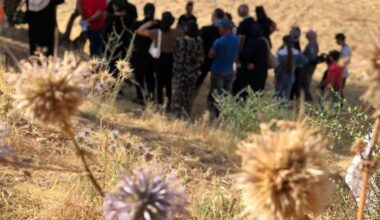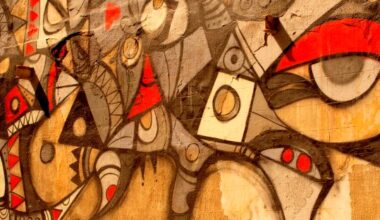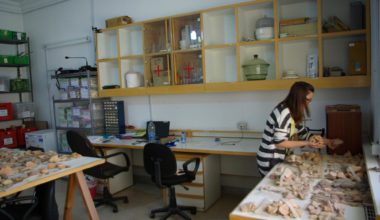In this blog, members of our digital archive team share their thoughts and experiences on CBRL’s first steps in establishing a digital archive.
In 2022, the archive team reached a milestone with the Digital Archiving Project. Archive summaries for our three locations (Amman Institute, Kenyon Institute and CBRL UK archives) are now available online here. A new digital repository to showcase digitised collections has been built, which will go live later this year. This has been achieved in a record breaking seven months. Newly digitised archive material, open-access ebooks and born-digital photographs and records relating to the institute’s history and the research that it has been involved in will soon be accessible to explore online. Read more about how this was achieved below.
Jessica Holland, Strategic Projects Director, CBRL, London, UK
In June 2022, I joined the Council for British Research in the Levant as a Project Archivist working on building the digital infrastructure to reunite the organisation’s archives that are spread out across sites in Jordan, East Jerusalem and the UK.
One task has been to consider the ways in which this history will inevitably play out in the structure of the archive, both offline and online. This in mind, I set out to discover the ways in which the archives came into the institution. At a basic level, this included writing summaries of our archival holdings for prospective researchers. So, we aimed as a team to conduct a survey of our holdings across the various sites, with the aim of improving accessibility.
The history of CBRL has been inherited from its predecessors; the British School for Archaeology (BSAJ) in Jerusalem, founded in 1919; and the British Institute at Amman for Archaeology and History (BIAAH), which was founded in the early 1970s. These schools form part of a wider network of British International Research Institutes (BIRI), the earliest founded in the nineteenth century and the last in 1960 at a time in which Britain was exercising soft power overseas, developing bilateral relations and cultural exchanges.
Of course, CBRL’s archives are not neutral spaces; they have inevitably been shaped by the context into which they were born. Thus, notebooks from the likes of figures such as Kathleen Kenyon and Crystal-M. Bennett are considerably significant materials, considering the wide historical gender gap in archaeology; they highlight the role that women played in the field, as well as in the establishment of the institutes.
Whilst the natural order of the archives privilege certain voices above others based upon socio-political hierarchies of the time, the materials also importantly say something about the crucial role of the Palestinian and Jordanian workers. Newspaper clippings, written correspondence and in some cases even receipts offer entry points to the lives of the workers whom without the excavations would have been impossible. These microhistories interlink with the macro, where the ruptures of the 20th century (such as the 1967 war) echo throughout.
Although small, this first step in surveying CBRL’s archival holdings is vital in providing a foundation from which researchers can work. Reading along the grain of the archive is impeded by the nature of it having been scattered across continents. Therefore, mapping memory across these diverse and overlapping institutions has become a painstakingly long, but necessary first step in understanding how these archives came into being. Furthermore, this has enabled us to embark on the next stages of creating a digital infrastructure with the aim to reunify these disparate materials.
Freja Howat, Project Archivist, CBRL, London, UK
Comments from our Archival Team:
خلال عملي مع “مجلس الأبحاث البريطانية في بلاد الشام ” لأعداد ملخصات خاصة بالأرشيف، لاحظت الكثير من الأمور التي عاشها الموظفين في تلك الأوقات وحجم تطور والتقدم في CBRL منذ التأسيس حتى الوقت الحالي، أيضا سمحت لي فرصة الاطلاع على الأرشيف معرفة الكثير من الأمور التي تخص المجتمع الأردني وبعض الأحداث المهمة في منطقة الشرق الأوسط، وأصبحت أملك معرفة أكبر بالعديد من الأمور التي تخص الأثار وقياس مدى اختلاف التكنولوجيا خلال القرن الماضي، عن ما هو موجود حالياً. بالإضافة لمعرفة المناطق الاثرية الموجودة في الأردن وبلاد الشام وهذا زاد من شغفي للقراءة والبحث، والان أصبحت متيقن أن لا خطوة للمستقبل دون معرفة الماضي.
طلال الشمري – موظف أرشفة لدى CBRL، بكالوريوس في علم المكتبات والمعلومات من الجامعة الأردنية.
During my work with the CBRL Amman Institute to prepare summaries for the archive, I noticed a lot of things that the employees experienced in those times and the extent of development and progress in CBRL since its founding until the present time. Also, the opportunity to view the archive allowed me to know a lot of things related to Jordanian society and some important events in the Middle East region, and I became more knowledgeable about many things related to archaeology and understanding the extent of the differences in technology over the past century, from what exists now. In addition to getting to know archaeological sites in Jordan and the Levant, this increased my passion for reading and research, and now I am certain that there is no step towards the future without knowing the past.
Talal Al-Shammari – Project Archivist at the Amman Institute, BA in Library and Information Science from the University of Jordan.
أظن أنني لن أنسى تلك اللحظة ما حييت، عندما بدأت البحث عن ورقة تدلني على العام الذي بدأت فيه الدراسة الأثرية لمنطقة الأزرق وقصر حرانة في الأردن، أبحث عن إبرة في أكوام من القش، كنت على وشك البكاء عندما وجدتها بعد غروب شمس 7/ كانون الأول/ 2022، هنا علمت أن هذه الدراسة وجدت ضوء الشمس عام 1975. عملت على كتابة ملخصات لصناديق أرشيف معهد كانيون لعدة أيام، قد يتضمن الصندوق الواحد ألف ورقة، كيف عليك أن تكتب ملخصاً لصندوق واحد يحوي ألف ورقة أو ما يزيد؟! بحثت عن المعلومات الأكثر إثارة للاهتمام تبعاً لتاريخ المؤسسة، وخمنت اهتمامات الباحثين في تلك الصناديق، أعلم تماماً أن كل قصاصة ورقة مهمة، وأن كل معلومة مهمة، ولكن الملخصات تعني الإيجاز، وهنا بالذات عليك أن تدرك أن العبرة بوجود الفكرة وتمهيد الطريق للبحث والسؤال.
كتابة الملخصات هي الطريقة المثلى التي ارتآها المجلس البريطاني للبحث في الشام؛ كتابة الملخصات تعني الخطوة الأولى للإتاحة، التي ستجلب المزيد من التمويل، لأن العمل الأرشيفي يتطلب التمويل، الذي سيمكن من حفظ المواد والأوراق في ملفات وصناديق مضادة للأكسدة، ورقمنتها لاحقاً.
يبدو الأمر غريباً أنني أصبحت جزءاً من الحياة اللاحقة لبعض أسماء علماء الآثار اللامعة، الأرشيف يكتب التاريخ، وهذا ما يحتم على المؤسسات والممولين واجب الحفاظ عليه خوفاً من موته، ولإعادته للحياة من جديد لأجل العلم، والبحث، والتاريخ، وكل الأشخاص الذين نسيناهم وتركناهم على سطور الأوراق.
I still remember that moment when I was searching for a paper to guide me through the year when the areas around Azraq and Kharanah in Jordan were surveyed. I was searching for a needle in the haystack. I almost cried when I found the answer after sunset on 7th December 2022. I finally knew that the Azraq and Kharanah survey saw the light in 1975.
I worked on writing Kenyon’s institute box summaries for several days. One box may contain a thousand papers or more. I asked myself how to write a summary for a box of 1000 pieces of paper. I searched for the most interesting information related to the history of the organisation. I guessed the interests of researchers in each box. I know that every piece of paper is important, and every piece of information is essential, but a summary requires brevity. Here, you need to grasp the importance of leading the way for research questions.
The Council for British Research in the Levant believes that presenting summaries is the first step to provide accessibility, and that this will open opportunities for the Council to apply to funders to conserve, preserve, and digitise items.
It feels strange that I became part of the afterlife of famous archaeologists. Archives write history. Therefore, institutions and funders must take the responsibility to preserve and revive it for knowledge, research, history, and all the people we left behind.
Amal Daoud – Archival Consultant at the Kenyon Institute, Sheikh Jarrah, East Jerusalem.
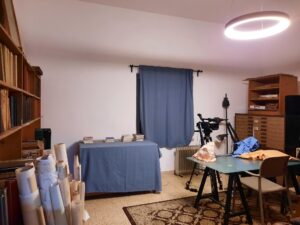 | 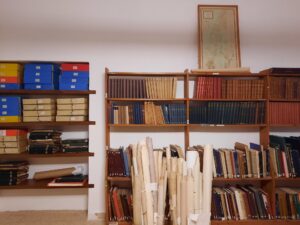 |














